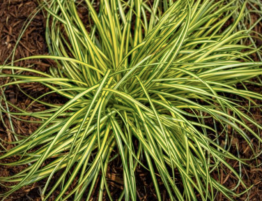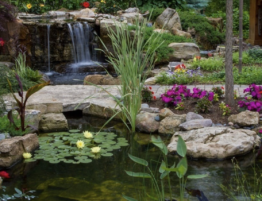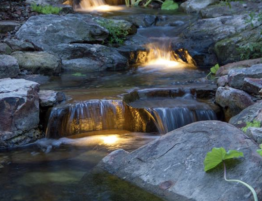Building a natural swimming poolisn’t just about creating a place to swim; it’s about crafting an eco-friendly oasis that harmonizes with nature. Imagine stepping into your backyard and being greeted by a pool surrounded by lush plants and clear waters filtered naturally by carefully chosen microorganisms. This tranquility is achievable with meticulous planning and an informed approach to sustainable materials.
Understanding your site’s specifics—like whether sandy soil requires extra sealing or how certain aquatic plants flourish better under specific sunlight conditions—is crucial. Such details highlight the thoughtful investment required, ensuring sustainability and efficiency. From recognizing soil types to balancing costs for excavation and high-quality liners, every step builds towards a functional and beautiful natural pool. Let’s dive into each phase methodically to ensure no detail is overlooked as you embark on creating this eco-friendly retreat.
To build a natural swimming pool with sustainable materials, start by selecting eco-friendly options like gravel, stone, and clay for the construction instead of concrete or fiberglass. Incorporate aquatic plants in designated filtration areas to naturally purify the water and ensure proper design elements such as sloping sides and separated swimming and plant zones for effective maintenance and aesthetics.
Planning Your Natural Swimming Pool
Proper planning is crucial when building a natural swimming pool, as it sets the groundwork for a sustainable and beautiful oasis. The first step is to assess the sitethoroughly. This means looking at factors such as soil type, slope, water table, and available sunlight. Each element plays a significant role in how your pool will function and its overall aesthetic appeal. For example, if you have sandy soil, you might need additional sealing methods like bentonite clay to ensure that water stays where it belongs. In contrast, clay-rich soils provide a more stable foundation that’s simpler to work with.
After assessing your site, the next logical step involves deciding on the dimensions and depthof your pool.
When determining the dimensions, it’s essential to consider both aesthetic and functional aspects. Generally, a natural swimming pool should comprise two distinct areas: a swimming zone and a regeneration zone.The swimming area is where you splash around, while the regeneration zone hosts aquatic plants that filter and purify the water through natural processes. The size of each area matters; typically, the regeneration zone should cover at least 50% of the total surface area of your pool. This balance ensures sufficient plant growth, which is integral to maintaining water quality.
Once you understand what zones are needed for swimming and filtration, we can focus on zoning more specifically.
Zoningenhances your pool’s functionality and contributes to its visual appeal. The regeneration zone should ideally feature a variety of native aquatic plants that thrive in your climate, supporting both aesthetics and ecology. In terms of depth, most natural pools maintain a standard swimming area depth of approximately 1.5 to 2 meters, allowing for safe swimming while keeping water quality stable. Conversely, shallower areas ranging from 0.2 to 0.5 metersare ideal for plant growth in the regeneration zone because they enhance sunlight penetration and encourage biodiversity within the ecosystem of your pool.
To further solidify these concepts in your design plan, consider making use of guidelines or templatesthat can help visualize how different depths and zones will integrate within your designated space. By applying strategic thinking and ecological principles from the onset, you’ll create a thriving environment that respects nature while providing recreation—a perfect synthesis of beauty and sustainability.
Thoughtful planning paves the way for an efficient build process and significantly reduces future maintenance stressors. By taking these careful considerations into account, you’re laying the foundation for an exceptional natural swimming pool setup that harmonizes with local ecosystems.
With this thoughtful framework in mind, it’s time to shift our focus to understanding how to effectively budget for materials and construction.
Budgeting for Materials and Construction
Budgeting is not merely a mundane task—it’s essential to avoid both financial pitfalls and construction delays. Knowing where to allocate funds means you’re well positioned for an efficient build that meets your expectations without breaking the bank. The key is understanding the various cost components involved in this journey, which often can be more intricate than they initially appear.
Cost Components
| Item | Estimated Cost (USD) |
| Pool Excavation | $1,000-$5,000 |
| Bentonite Clay | $0.35 per sq ft |
| Synthetic Liners | $0.25-$1 per sq ft |
| Aquatic Plants | $500-$2,000 |
| Pump & Filtration | $1,000-$2,000 |
| Soil and Gravel | $500 – $1,500 |
| Labor | $5,000 – $15,000 |
Each of these components will contribute significantly to your bottom line. For example, pool excavation costs vary widely depending on your site’s conditions and size. It’s crucial to account for not just base costs but also unexpected expenses—like needing to excavate rock or dealing with underground utilities that complicate digging.
Similarly, while you might see bentonite clay prices at around $0.35 per square foot, you’ll want to calculate how much you truly need based on your pool design and soil conditions.
Moving from individual item costs to the overall budgeting strategy is essential.
Balancing Costs
As you set your financial allocations, it’s wise to allocate at least 30% of your budgetto high-quality liners since they play a vital role in maintaining water quality and integrity. Skimping on filtration systems may seem tempting due to their cost—ranging from $1,000 to $2,000—but doing so can lead to far greater expenses down the line if water quality suffers.
Remember: a robust ecological balance relies on effective infrastructure.
Planning for aquatic plants, which could cost anywhere from $500 to $2,000, also merits consideration; these plants aren’t just aesthetic but serve as invaluable components in filtration and natural purification processes. Allocating funds thoughtfully here allows for customization where needed, ensuring that critical features like circulation and biological filtration meet sustainability goals.
Understanding these costs provides a clearer picture of what a successful project looks like and helps guide decisions about selecting materials that enhance environmental sustainability throughout the process.
Selecting Eco-Friendly Pool Liners
Choosing eco-friendly pool liners minimizes your environmental footprint and enhances the durability of your pool. For those eager to embrace sustainability, it is essential to understand the materials available and their contributions to both the environment and your swimming experience.
Types of Liners
One popular option for eco-conscious builders is Bentonite Clay. This natural material serves as a cost-effective liner, priced around $0.35 per square foot. Its unique properties allow it to expand when wet, creating a robust, watertight seal. However, successful application hinges on proper installation. Ensure an even thickness across the surface and allow adequate time for it to cure. Although it requires more precision during setup, the benefits—including reduced chemical use in pools—make Bentonite a worthwhile choice.
On the other hand, there are EPDM Liners, which run between $0.80 and $1 per square foot. While slightly pricier, their durability and flexibility across varying temperatures offer excellent long-term value. EPDM outshines conventional materials like PVC, boasting superior resistance to UV rays, which diminishes degradation over time.
In addition, here are a few benefits of using EPDM liners:
- Easy maneuverability during installation reduces labor time.
- High elasticity prevents tearing from temperature changes.
- Non-toxic and safe for aquatic life protects the ecosystem.
By carefully considering these options and their implications for sustainability and maintenance, you will be better prepared to make informed choices that suit your needs while also contributing positively to the environment. Let’s now shift our focus to how best to layout your new outdoor oasis for maximum enjoyment and functionality.
Designing the Pool Layout
Thoughtful design not only enhances the functional aspects of a natural swimming pool but also elevates its beauty, transforming it into a stunning centerpiece in your outdoor space. To achieve a harmonious balance between aesthetics and utility, it’s crucial to create distinct zones that cater to various activities and ecological functions.
Separate zones for different functions
A well-designed pool separates the functions, ensuring efficient circulation and filtration. The two primary zones you should consider are the swimming zoneand the regeneration zone.
Swimming Zone
The swimming zone is often the heart of the pool. This area should feature a deeper central section designed specifically for swimming, allowing enough depth for comfort while discouraging excessive plant growth within this region. To enhance usability, aim for smooth contours around the edges; this not only adds elegance but facilitates safe entry and exit points. Think of this zone as an inviting rectangle where swimmers can glide freely.
Moving outward from the central swimming area, you’ll want to carefully craft your regeneration zone.
Regeneration Zone
The regeneration zone is crucial in maintaining water clarity and quality; here, shallow areas on the perimeter encourage robust plant growth. A crucial design element is to incorporate gravel beds along with rooted aquatic plants, as they naturally filter water before it re-enters the swimming area. Ensure that this zone has ample space to prevent overcrowding; remember that plants require room to spread out for optimal oxygenation and water filtration.
The size of your regeneration zone significantly influences how well it performs its filtering function. It is advisable to dedicate about half of your total pool area to this beneficial environment.
Lastly, consider integrating edge treatments, like stones or pebbles, bordering these zones to create visual continuity while promoting safe access for both humans and wildlife. Each element you include should contribute to the overall goal: creating a functioning ecosystem that operates efficiently while remaining aesthetically pleasing.
With clearly defined zones established, you set the stage for further enhancements that will elevate both function and beauty in your outdoor oasis.
Landscaping for Aesthetic Appeal
Creating a stunning landscape around your natural swimming pool requires thoughtful choices that enhance visual appeal and foster a harmonious relationship with nature. By carefully selecting plants and materials, you can cultivate an inviting atmosphere that complements the tranquility of your pool while being sustainable.
Native plants should be prioritized because they thrive in local conditions, require less water and maintenance, and support your area’s unique biodiversity.
Step 1: Native Plant Selection
Opting for native plants is an eco-friendly way to enrich both the regeneration zone of your pool and the surrounding landscape. Plants like water lilies, which float gracefully on the surface of the water, not only add aesthetic value but also provide shade that helps maintain water temperature.
Incorporating wildflowersaround the edges creates vibrant splashes of color while attracting pollinators such as bees and butterflies—benefits that add layers of life to your environment without creating additional upkeep burdens. This synergy between plant selection and habitat creation transforms your swimming pool into more than just a recreation area; it becomes a thriving ecosystem.
Step 2: Complementing Structures
When it comes to landscaping, infrastructure plays a crucial role in unifying your design with the natural world. Using materials like natural stoneor reclaimed woodfor decking and pathways seamlessly blends structures into the surroundings while remaining eco-friendly.
For example, caringly arranged flagstones can create rustic walking paths that guide guests from lush garden spaces to tranquil waters, enhancing the functional flow of your yard. Every piece you incorporate evokes authenticity—every wooden beam tells a story of sustainability, while stones offer stability and permanence.
These landscaping choices intricately merge aesthetics with functionality, creating spaces that invite relaxation and enjoyment while harmonizing with nature’s beauty. Let’s now explore how to establish effective filtration and cleaning zones to ensure pristine water quality in your oasis.
Building Filtration and Cleaning Zones
Filtration zones are crucial for maintaining clean water in your natural swimming pool, and they require meticulous planning. Think of them as the lungs of your pool, filtering impurities and ensuring a healthy ecosystem for both plant life and swimmers alike. The biological filtration system mimics natural bodies of water by utilizing gravel beds and aquatic plants to treat the water. This not only reduces the need for chemical treatments but also creates a vibrant habitat.
Step 1: Mechanical Filtration Setup
When setting up mechanical filtration, the choice of equipment and its arrangement is vital. A well-designed mechanical filtration system circulates water through gravel beds, allowing debris to settle while oxygenating the water. To get it right, make sure to select a pump and aerator that are appropriately sized for your pool’s volume; otherwise, weak circulation can lead to stagnant patches or buildup in corners. A typical setup might cost between $1,000 and $2,000, which is a worthy investment for ensuring life within your otherwise serene oasis.
Consider this: Installing a pump that’s too small may lead to frequent cleanings, while one that’s too large could create turbulence unwelcoming to certain plants.
Once you have the mechanical aspect sorted, it’s time to enhance your filtration system with living elements that naturally purify the water.
Step 2: Biofiltration
The next step involves creating biofiltration zones filled with specific plants that help filter contaminants and encourage clarity. Plants such as cattailsand reedsexcel in these roles by absorbing pollutants through their root systems while simultaneously enriching the water with oxygen—a two-for-one benefit! Designers like Don Schooner from Inspired By Nature recommend using a mixture of submerged plants along with emergent species for effective filtration. This combination doesn’t just ensure cleanliness; it improves overall water quality significantly.
For effective biofiltration, aim for a balanced ratio of submerged plants (like hornwortor water lily) that stabilize nutrients in the water column and emergent species that reach above the surface. Together, they foster a robust ecosystem that enhances both aesthetics and function.
If you’re ever uncertain about plant choices or arrangements, consult with local aquatic garden specialists—they can provide insights tailored to your climate and preferences.
As you integrate these filtering strategies into your design plan, consider how the addition of various species can further enrich your natural habitat, setting the stage for an even more diverse environment. Further exploration into how aquatic flora contributes to this balance promises valuable insights into achieving harmony in your serene retreat.
Adding Aquatic Plants and Wildlife
The presence of plants and wildlife is vital to maximizing the health of your natural swimming pool. They contribute not only to aesthetic beauty but also ensure a self-sustaining environment where nutrients are balanced, water remains clean, and the ecosystem thrives.
Step 1: Introduction of Plants
Starting your plant introduction with hardy species like hornwortor water lettuceis essential. These plants are known for their rapid growth, enabling them to establish a quick filtration setup almost immediately.
Hornwort can thrive submerged in the water, providing shelter and oxygen for aquatic life while effectively absorbing nutrients and helping to keep algae at bay. Water lettuce, on the other hand, floats gracefully on the surface, offering shade to reduce overheating and providing habitat for small creatures.
As these plants fill your pool, they’ll create an underwater world that enhances beauty and promotes biological stability. The roots filter excess nutrients from the water while producing oxygen, which is crucial for fish and other aquatic organisms. To maintain optimal growth conditions, assess sunlight exposure and ensure adequate light without overcrowding.
Step 2: Encouraging Wildlife
Once you’ve successfully introduced plants, the next step is to encourage beneficial wildlife. This involves attracting species such as dragonflies, which help control mosquito populations, or selecting specific fish like minnowsthat can mitigate algae growth. However, it’s vital to ensure that any wildlife introduced into your pool is compatible with your local ecosystem.
When introducing wildlife, consider starting with small numbers to monitor their interactions with both the environment and the plants you’re cultivating. This approach allows adjustments if necessary without overwhelming the system.
Moreover, enhance your pool’s appeal to wildlife by adding features like rocks or logs near the water’s edge; these serve as resting places and create additional habitats for insects and frogs. Remember that a healthy balance between flora and fauna creates a thriving natural pool environment.
In conclusion, creating a sustainable aquatic ecosystem requires careful planning and consideration of both plants and wildlife. For more detailed guidance and professional help on building your natural swimming pool, visitClarity Ponds.







